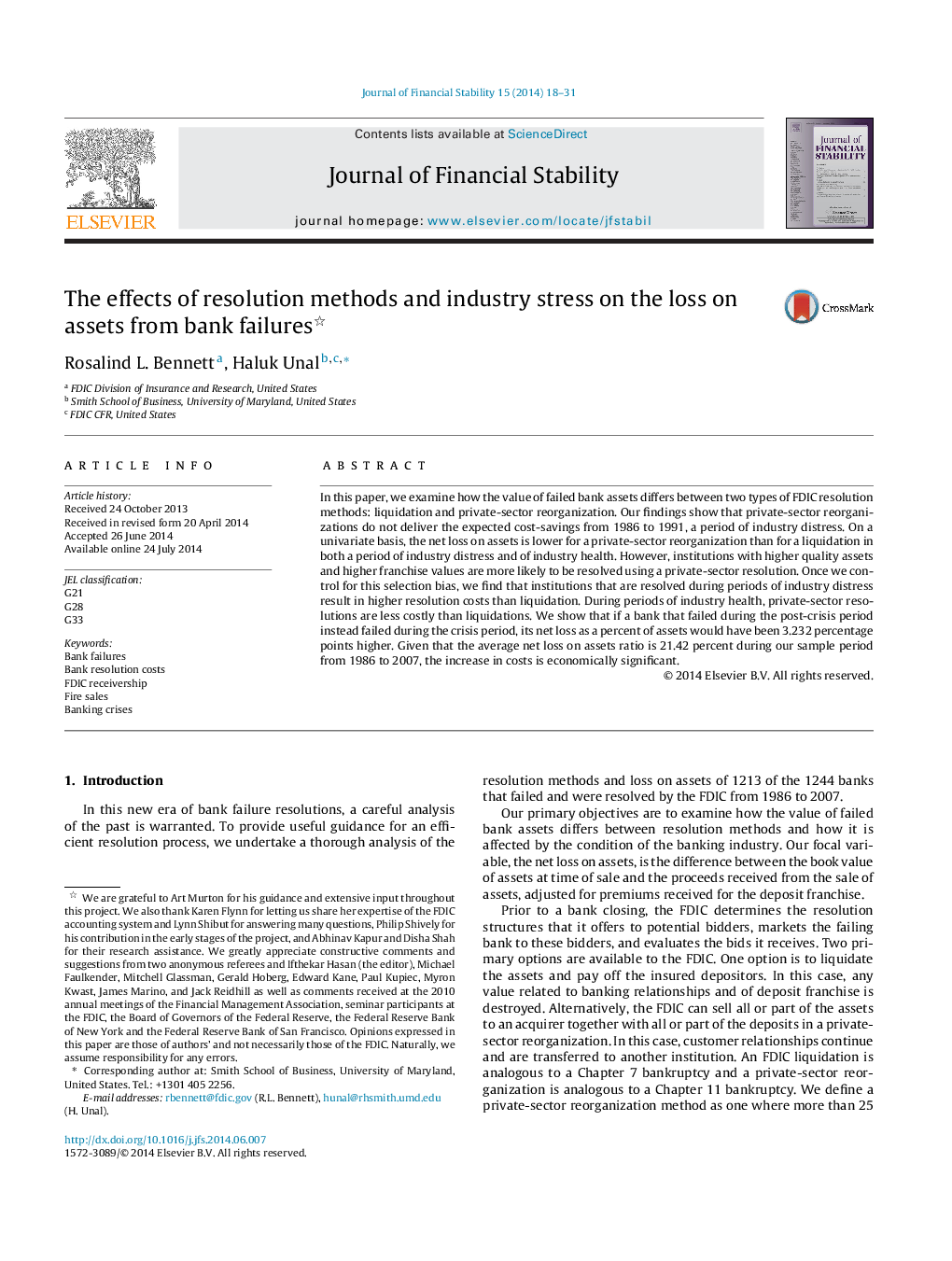| Article ID | Journal | Published Year | Pages | File Type |
|---|---|---|---|---|
| 7409542 | Journal of Financial Stability | 2014 | 14 Pages |
Abstract
In this paper, we examine how the value of failed bank assets differs between two types of FDIC resolution methods: liquidation and private-sector reorganization. Our findings show that private-sector reorganizations do not deliver the expected cost-savings from 1986 to 1991, a period of industry distress. On a univariate basis, the net loss on assets is lower for a private-sector reorganization than for a liquidation in both a period of industry distress and of industry health. However, institutions with higher quality assets and higher franchise values are more likely to be resolved using a private-sector resolution. Once we control for this selection bias, we find that institutions that are resolved during periods of industry distress result in higher resolution costs than liquidation. During periods of industry health, private-sector resolutions are less costly than liquidations. We show that if a bank that failed during the post-crisis period instead failed during the crisis period, its net loss as a percent of assets would have been 3.232 percentage points higher. Given that the average net loss on assets ratio is 21.42 percent during our sample period from 1986 to 2007, the increase in costs is economically significant.
Related Topics
Social Sciences and Humanities
Economics, Econometrics and Finance
Economics, Econometrics and Finance (General)
Authors
Rosalind L. Bennett, Haluk Unal,
